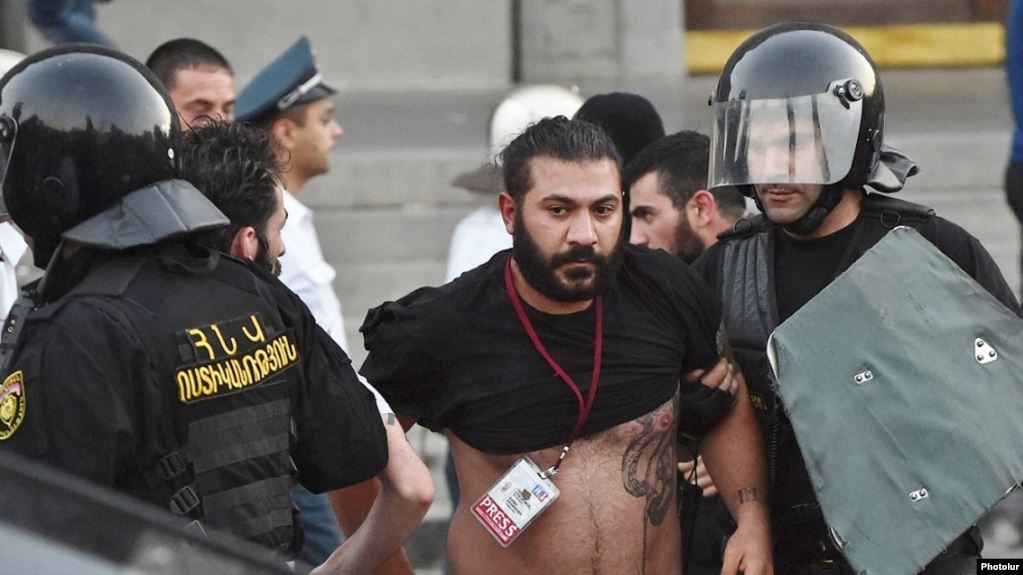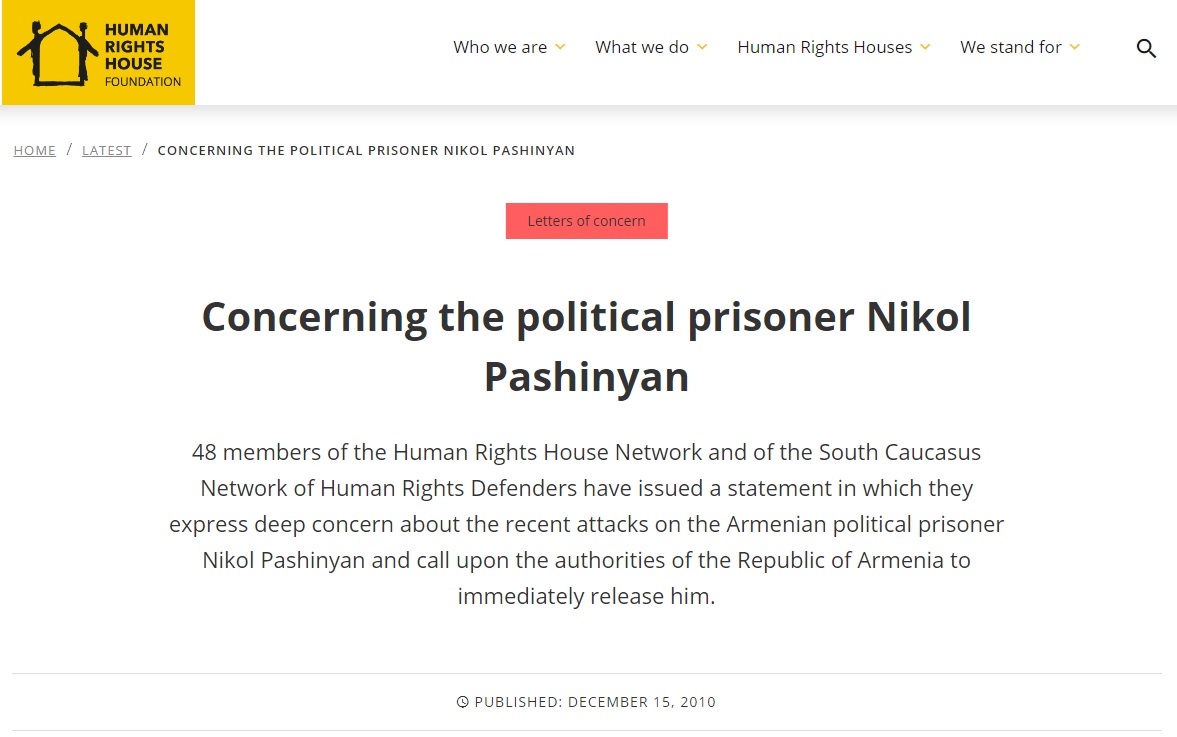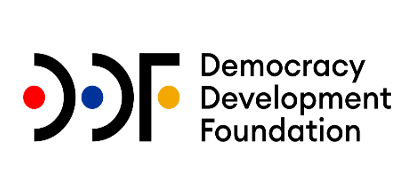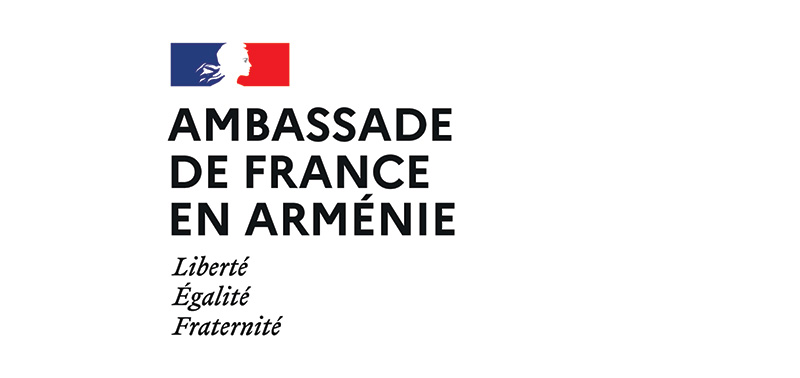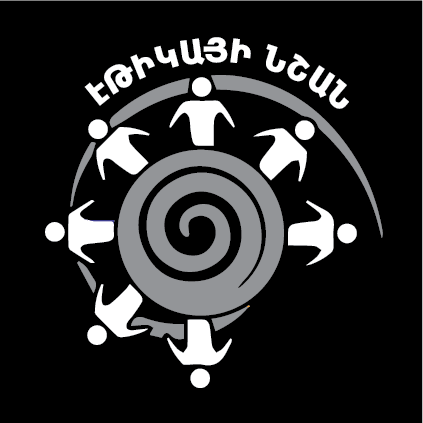In a September 2 interview with Russia’s RBC television channel, Armenia’s second president Robert Kocharyan stated that there were no political prisoners under the previous government, and that journalists had never been beaten.
When asked by a journalist what parallels he could draw between the 2018 Velvet Revolution in Armenia and the recent protests in Belarus following the elections, Kocharyan noted that the differences are insignificant. He emphasized that the attitude of Western countries towards Belarus is completely different from their attitude towards Armenia.
“The Armenian government has objectively been more tolerant of dissent. The President of the Republican Party of Armenia (Serzh Sargsyan – Ed.) cooperated quite actively with the Western countries. “We did not have political prisoners, we did not have cases of journalists being beaten, there were no mysterious disappearances of people …,” the second president said.
However, Kocharyan’s claims that journalists were not beaten or there were no political prisoners during the RPA rule are puzzling and do not correspond to reality.
Journalists were beaten
The last months of Robert Kocharyan’s rule and the first months of Serzh Sargsyan’s presidency were marked by severe restrictions on the media.
According to the 2008 report of the Committee to Protect Freedom of Expression (CPFE), 18 cases of violence against journalists were reported during that year.
International organizations also responded to the violence against journalists in the run-up to that year’s presidential election. In particular, Reporters Without Borders called for the perpetrators of attacks on journalists covering the Armenian presidential election to be punished.
2015 was a tense year for Armenian journalists, first due to the Electric Yerevan demonstrations in the capital, and then due to the constitutional amendments on December 6.
In 2015, the CPFE registered a total of 8 cases of physical violence against media, as a result of which 23 journalists and cameramen were injured.
13 of them were targeted by the police during the police operations on June 23 on Baghramyan Avenue in Yerevan.
In 2016, violence against journalists became more pronounced. This is also reflected in the CPFE annual report: “The demonstrations following the armed attack of the Sasna Tsrer group on the Police base were accompanied by large-scale violence by the police against journalists and cameramen and obstruction of legal professional activities.”
According to the CPFE, only in those days 27 journalists and cameramen suffered from police actions, 19 of whom were subjected to physical violence, receiving bodily injuries, and 8 faced various other pressures and persecution.
Throughout the year, the CPFE recorded a total of 10 cases of physical violence, in which 26 journalists and cameramen were injured, and 52 cases of other types of pressure on the media and their representatives.
During the events of April 2018 as well, violence was used against journalists. In particular, in the period from April 11 to 23, 18 cases of physical violence against media representatives were registered, as a result of which 22 people were injured.
Thus, Kocharyan’s claim that journalists were not beaten during the previous government is false.
Citizens were deprived of their liberty for political views
Kocharyan’s claim that there were no political prisoners during the previous government is also untrue.
During the rule of the third president Serzh Sargsyan, public figures arrested in connection with the March 1 case appeared in prisons.
In 2008, Council of Europe Commissioner for Human Rights Thomas Hammarberg reported that 19 people had been arrested in the March 1 case based solely on police testimony. He stressed that it is unacceptable to detain or convict people solely for political reasons or non-violent actions.
In 2010, Human Rights Watch made a special reference to the case of political prisoner Nikol Pashinyan. They claimed that at that time the editor-in-chief of Haykakan Zhamanak, activist of the Armenian National Congress, was being persecuted for his political views, and that he had been abused for writing critical articles in a penitentiary.
It should be noted that in many cases, even if for some reason the international organizations refrained from using the term political prisoner, there were in fact people imprisoned in Armenia due to their political views. Thus, on December 31, 2016, during an attempt to place a Christmas tree in Freedom Square, there was a clash between the member of “New Armenia” movement Gevorg Safaryan and the police officers, after which Safaryan was arrested. Policeman Gegham Khachatryan claimed that Safaryan had hit him.
While the court was examining the case, Safaryan was under arrest for more than a year. He was later sentenced to 2 years in prison.
Human Rights Watch said it was concerned that authorities had targeted Gevorg Safaryan for his political views.
Open Society Foundations and Robert Kocharyan
During the same interview, Robert Kocharyan referred to the activities of the Open Society Foundations (founded by George Soros) in Armenia.
He stated that Armenia is “being sorosized” (noting that this term belongs to him). According to Kocharyan, in the past it was done at the level of marginal non-governmental organizations, and today the “Soros people” have become part of the government. The second president responded to the journalist’s observation that the NGO also existed during Kocharyan’s time: “I did not know there was a Soros office here. There was just some organization … as far as I understand, they did not have an office. Through homes… they crawled into the country.”
This statement is also strange. “Open Society Foundations” has been registered in Armenia and has been operating since 1997. Kocharyan’s assertion that the foundation did not have an office from the beginning is false. From the very beginning of its activity, the organization had an office in Pushkin, Tumanyan streets and Aygedzor district of Yerevan. Moreover, during Kocharyan’s presidency, the foundation gave hundreds of thousands of dollars in grants to dozens of schools, universities and various organizations every year.
In response to FIP.am’s inquiry, the OSF informed that the foundation had given grants of more than $ 19,141,981 in 1998-2008, when Robert Kocharyan was president.
According to the organization, during Kocharyan’s presidency, among other programs, Open Society Foundations-Armenia signed a memorandum of understanding with the Kocharyan government ministry to implement educational programs in more than 100 schools, including “Step by Step”, Critical Thinking ” and “Community Television Centers” programs. The Foundation worked directly with the Ministry of Justice to support the establishment of the Penitentiary Supervisory Board, collaborated with the National Academy of Sciences to provide Internet access to scientific institutions (Virtual Silk Road project), and funded the National Library, Fundamental Science Library, and YSU to create the first general bibliography of Armenian language literature.
“We believe that the fact that Mr. Kocharyan does not remember / was not aware of the existence of our foundation during his presidency is not a deliberate omission, but simply because he has never been interested in science, education or justice,” the representative of the Open Society Foundations-Armenia noted.
Moreover, since 1998, every year OSF has been qualified by the government as a charitable organization, receiving tax benefits.
Thus, during the interview with the Russian RBC, Robert Kocharyan made manipulative, false and very strange statements.
Lusine Voskanyan

 FACTOMETER
FACTOMETER

